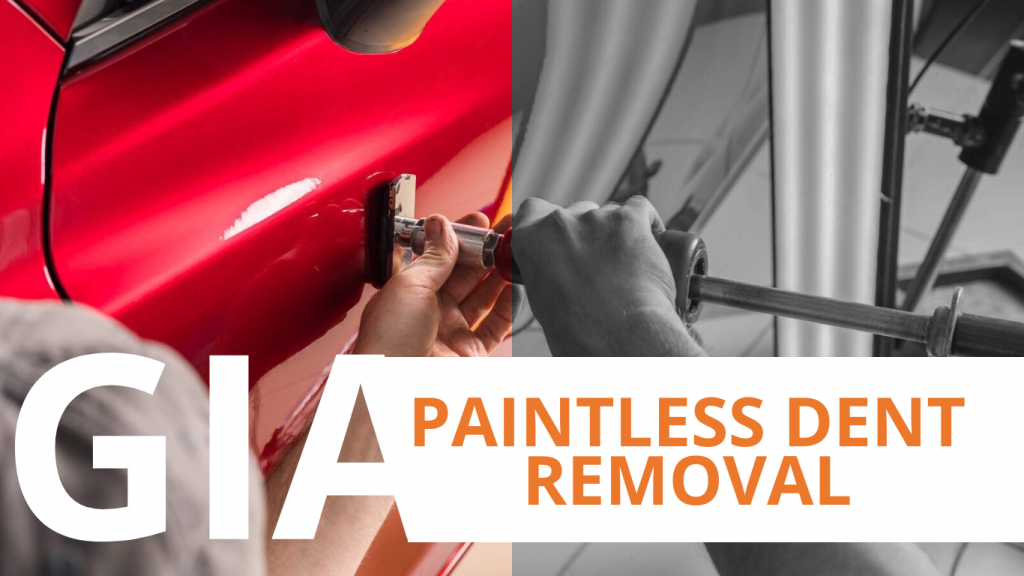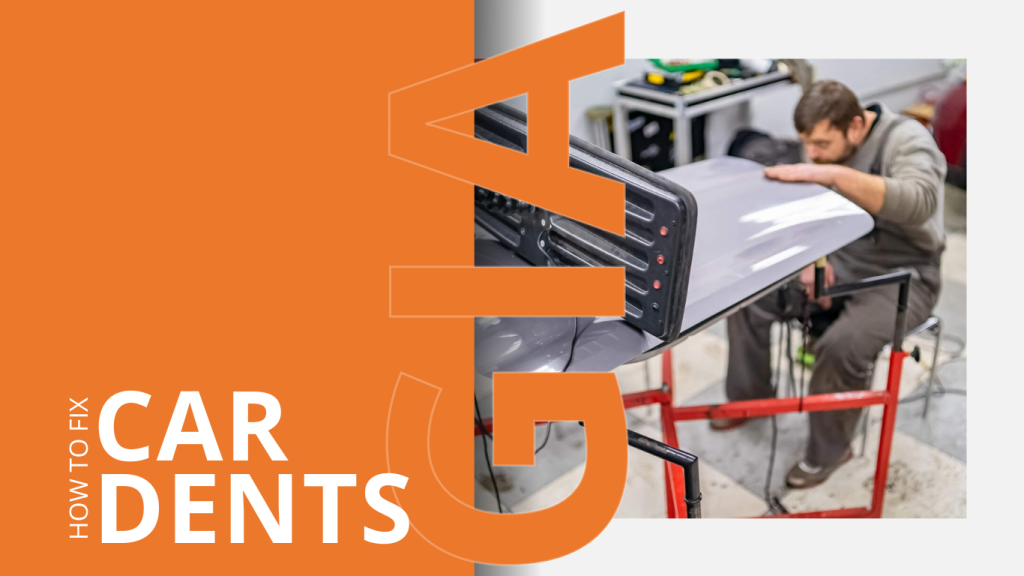Paintless dent repair (PDR) is a highly effective and environmentally-friendly technique used to remove minor dents and dings from vehicle body panels without traditional bodywork and repainting. Skilled technicians employ specialised paintless dent repair tools to carefully massage the metal back into its original shape, preserving the vehicle’s paint finish.
PDR has become a popular choice due to its cost-effectiveness and time efficiency. Moreover, it is a do-it-yourself (DIY) friendly method, with paintless dent repair DIY kits readily available for those who prefer tackling the task themselves.
Maintaining a vehicle’s appearance is essential, as unsightly dents can significantly diminish its aesthetics and resale value. With paintless dent removal, owners can promptly address minor cuts before they worsen or cause structural damage. This preventive approach ensures a well-maintained and appealing vehicle.
Whether performed by skilled technicians or DIY enthusiasts, paintless dent repair remains a viable solution for minor dents with intact paint. By embracing this innovative repair method, vehicle owners can save money and time and contribute to a greener approach to automotive maintenance.
When Can You Use a Paintless Dent Repair?

Paintless Dent Repair (PDR) is a versatile technique used to remove minor dents and dings from vehicle body panels effectively. It is essential due to its cost-effectiveness, preservation of the original paint finish, and time efficiency. Here are some examples of when PDR is needed:
1. Hail Damage: After a hailstorm, vehicles may have numerous minor dents on the roof, hood, and trunk. PDR is ideal for restoring the vehicle’s appearance without costly traditional repairs.
2. Door Dings: Parking lot mishaps or minor collisions can result in door dings, where another vehicle’s door impacts the side of your car. PDR can quickly and efficiently repair these minor dents.
3. Shopping Cart Dents: Accidental impacts from shopping carts or other objects can cause minor dents on car doors and fenders, which can be easily fixed using PDR.
4. Minor Collisions: Low-speed fender benders and minor accidents can sometimes lead to small dents that can be repaired through PDR.
Best Practices and Safety Measures to Avoid Dents
While PDR is an effective solution for minor dents, it’s essential to take preventive measures to avoid them altogether:
1. Park Wisely: Park away from crowded areas and shopping cart corrals to reduce the risk of door dings and shopping cart impacts.
2. Be Cautious While Driving: Maintain a safe following distance to avoid collisions, and drive carefully in tight spaces.
3. Use Protective Accessories: Invest in car door edge guards and bumper protectors to minimise the impact of accidental bumps and scratches.
4. Avoid Extreme Temperature Changes: Sudden temperature changes, like parking under direct sunlight on a hot day or washing the car with cold water, can cause paint damage and potentially lead to dents.
5. Regular Maintenance: Keep your vehicle in good condition to reduce the likelihood of minor accidents causing dents.
By being proactive and implementing these best practices, you can decrease the chances of dent occurrence and keep your vehicle looking pristine. However, should minor dents still happen, PDR remains a reliable and efficient solution to restore your car’s appearance.
Paintless Dent Repair Guide – How to Remove a Dent

Paintless Dent Repair (PDR) is a cost-effective and efficient method for removing minor dents without repainting. Here’s a step-by-step guide:
1. Assessment: Inspect the dent’s size, location, and accessibility to determine its suitability for PDR.
2. Clean the Area: Ensure the dent and surrounding area are clean and debris-free.
3. Heat Application: Use a heat gun or a hairdryer to warm the dented area slightly, making the metal more flexible for manipulation.
4. PDR Tools: Select the appropriate paintless dent repair tool for the dent type. Standard tools include metal rods and picks.
5. Massage the Dent: Gently massage the dent from the inside out using the selected tool, slowly pushing the metal back to its original shape.
6. Check Progress: Frequently check your progress to ensure the dent is gradually disappearing.
7. Smooth Finish: Once the dent is flattened, smooth the surface and polish it to restore its original appearance.
Dents suitable for PDR include hail damage, door dings, and small collisions. Car owners can effectively remove minor marks by following this guide without costly traditional repairs.
What are the Techniques for Paintless Dent Removal?

Paintless Dent Removal (PDR) utilises specialised techniques to remove minor dents and dings from vehicle body panels. Some primary PDR techniques include:
1. Pushing from Behind: Technicians use specialised rods to gently remove the dent from the backside, gradually restoring the panel’s original shape.
2. Glue Pulling: A unique adhesive and pulling tabs are used to gently pull out the dent from the outside, particularly useful for cuts in challenging areas.
3. Tapping Down: Small high spots left after pushing the dent out are carefully tapped with a blending hammer.
Knowing the techniques for PDR is vital as it empowers car owners to address minor dents themselves with paintless dent repair DIY options. By understanding these techniques, individuals can save on repair costs, maintain their vehicle’s aesthetics, and preserve its original paint finish.
Can Your Dent be Fixed with Paintless Dent Repair?
Whether a dent can be fixed with Paintless Dent Repair (PDR) depends on its size, location, and severity. PDR is most suitable for minor cuts caused by hailstorms, door dings, or small collisions where the paint is intact and the metal hasn’t been stretched or creased. However, larger dents, deep creases, or damages with chipped paint may not be ideal for PDR. Additionally, dents on sharp bodyline edges or double panels may be challenging to access and repair with PDR.
Understanding the types of dents suitable for PDR empowers DIY enthusiasts to attempt paintless dent repair, utilising techniques like pushing from behind or glue pulling. However, it’s essential to recognise the limitations and consider professional assistance for complex or severe damages that may require traditional dent repair techniques.
How to Fix Car Dents of Different Shapes with Paintless Dent Repair?

Paintless Dent Repair (PDR) is a versatile technique to effectively fix car dents of different shapes. For round cuts, specialised rods push them out from behind, while creases are massaged using long, flat tools. Hail damage with numerous minor dents is addressed through glue pulling and tapping down techniques. Common causes of dents are hailstorms, door dings, minor collisions, and parking lot mishaps. PDR is suitable for minor cuts where the paint is intact.
Specialised tools like metal rods, picks, blending hammers, and glue-pulling tabs are needed to perform PDR. DIY enthusiasts can find paintless dent repair tools, but for complex dents, it’s advisable to seek professional paintless dent repair near you for optimal results.
If you need paintless dent repair or any automotive repair services, contact GIA Smash Repairs for professional and reliable assistance. Our team of skilled technicians has the latest tools andgia technology to perform various repair services, including paintless dent repair (PDR). We pride ourselves on offering efficient and cost-effective solutions, whether fixing minor dings or significant damages.
